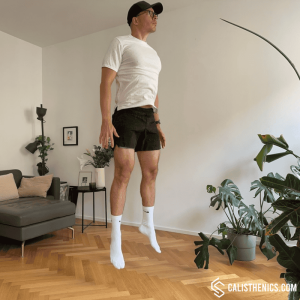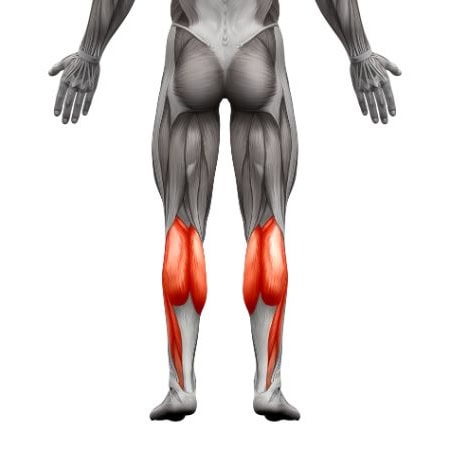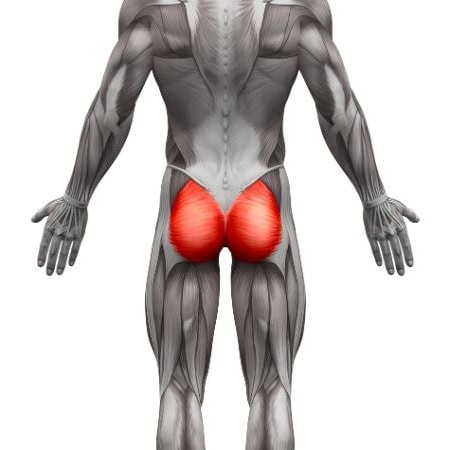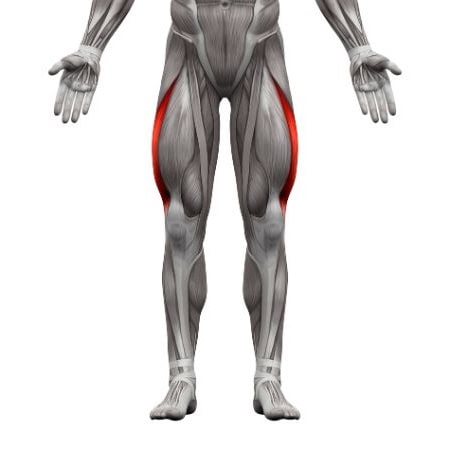Jumping Squats
How to do Jumping Squats?
The jumping squats is a plyometric exercise that combines the traditional squat with an explosive jump, increasing power, strength, and endurance in the lower body. This high-intensity movement targets the quadriceps, hamstrings, glutes, and calves while also engaging the core for stability. Jump squats improve athletic performance, cardiovascular fitness, and coordination, making them an excellent choice for athletes or anyone looking to increase explosive power.
Steps to Perform the Exercise:
- Set Your Feet: Stand with your feet shoulder-width apart, with toes slightly pointing outward.
- Engage Your Core: Tighten your abdominal muscles and maintain an upright posture with your chest lifted and shoulders back.
- Lower into a Squat: Push your hips back and bend your knees, lowering yourself into a regular squat. Keep your chest up, and make sure your knees track over your toes.
- Explode Upward: Push through your heels and explosively jump off the ground, fully extending your knees and hips. Use your arms to generate momentum by swinging them up as you jump.
- Land Softly: As you land, bend your knees slightly to absorb the impact and return directly into the squat position. Your feet should be shoulder-width apart, and your chest should stay lifted as you descend back into the squat.
- Repeat: Immediately go into the next repetition, performing 10-15 jumps per set, adjusting reps based on your fitness level.
Tips for the proper execution of Jumping Squats
Use Your Arms for Power: Swing your arms upward as you jump to help generate momentum and get more height in your jump.
Soft Landing: Land softly on the balls of your feet, with knees slightly bent, to reduce the impact on your joints. Immediately transition back into the squat position.
Engage Your Core: Keep your core tight throughout the movement to help stabilize your body during the jump and landing phases.
Controlled Descent: Avoid crashing into the squat after landing. Control your descent and use proper squat form when lowering yourself back down.
Explosive Jump: Focus on jumping as high as possible with each rep, using your legs and hips to drive upward.
Muscles worked when doing Jumping Squats
- Primary Muscles: Quadriceps, hamstrings, glutes.
- Secondary Muscles: Calves (gastrocnemius, soleus), core (rectus abdominis, obliques), lower back (erector spinae).
Primary Muscle(s):
Secondary Muscle(s):
Equipment needed for Jumping Squats
No equipment needed for this exercise.
Adjust the difficulty of Jumping Squats
How to make Jumping Squats harder?
How to make Jumping Squats easier?
How to make Jumping Squats harder?
To make Jumping Squats harder:
-
Increase Jump Height: Focus on jumping higher with each rep, pushing yourself to explode off the ground with maximum power.
-
Add Resistance: Wear a weighted vest or hold light dumbbells in your hands to add resistance and challenge your muscles more.
-
Increase Reps or Duration: Perform more repetitions, increase the number of sets, or set a timer to perform jumping squats for a specific amount of time.
-
Add a Pause: Pause in the squat position for 2-3 seconds before jumping, which increases time under tension and makes the movement more challenging.
How to make Jumping Squats easier?
To make Jumping Squats easier:
-
Perform Bodyweight Squats: If jumping squats are too intense, start by performing regular bodyweight squats to build strength and mobility in your legs.
-
Reduce Jump Height: Lower the intensity by performing smaller jumps, focusing on landing softly and with control.
-
Decrease Reps or Sets: Start with fewer repetitions and gradually increase as you build strength and endurance.





